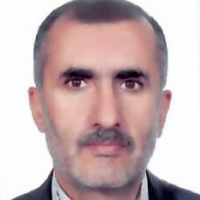Comparison of artificial intelligence models and experimental models in estimating reference evapotranspiration (Case study: Ramhormoz synoptic station)
Water resources are strongly influenced by the hydrological cycle and the estimation of evapotranspiration as the main component of the hydrological cycle plays an important role in water resources management. This phenomenon is nonlinear and very difficult to estimate in the sense that there are many parameters involved in its estimation. There are many methods to estimate evapotranspiration none of which is free from problems. Some of these methods, such as Lysimeter, are costly and time-consuming, and others, such as empirical methods only have local value. Therefore, the application of a method which is able to model this phenomenon based on its entity and with minimum data seems necessary. In recent years, the use of artificial intelligence models to simulate various problems has become very popular. In terms of performance, artificial neural networks are very efficient models whose computational speed is completely independent of the mathematical complexity of the algorithms or the method used. The purpose of this research is to compare artificial neural network models, neural network model optimized with genetic algorithm and experimental models in estimation of reference evaporation and transpiration using meteorological data in Ramhormoz synoptic station.
As mentioned above, the aim of this study was to compare the models of artificial neural network (ANN), artificial neural network optimized with genetic algorithm (ANN + GA) and experimental models (Hargreaves-Samani, Blaney-Criddle and Irmak) in estimating reference evapotranspiration compared to the results obtained from the Penman-Monteith FAO standard model by using Meteorological data in Ramhormoz synoptic station. For this purpose, meteorological parameters of Ramhormoz synoptic station were collected monthly during the years 2011 to 2018. This information includes: minimum temperature, maximum temperature, average temperature, wind speed at 2 meters, minimum relative humidity, maximum relative humidity and was sunny hours.Artificial neural networks are simplified models of the working system of the human brain, which are not comparable to natural systems. These models try to imitate human thought processes.The process of using artificial neural network models includes three stages of training, verification and testing. In the present study, 70% of the data was considered for training, 10% for validation and 20% for testing. Also, the stimulus function considered for the training and test phase is the sigmoid tangent.To extract better results from the artificial neural network model, it is necessary to optimize the parameters used. To determine the most optimal parameters required for the artificial neural network model, such as the number of layers, neurons and the weight of the layers, a lot of time is spent on their calibration using the trial and error method. For this reason, in this research, the combination of artificial neural network model and genetic algorithm (ANN+GA) was used in order to achieve the optimal parameters of the artificial neural network model. Minimizing the amount of simulation error as a function of the objective function and the number of iterations was considered as the stopping condition of the optimization algorithm.
Overall, the results showed that artificial neural network models to empirical models used to model higher correlation with the Penman-Monteith FAO model. In addition, among the neural network models used, the integrated neural network model with the genetic algorithm has a higher correlation with the Penman-Monteith FAO model. So that the value of R2 in Blaney Kridel, Hargreaves Samani, Airmak, ANN and ANN+GA models is 0.65, 0.819, 0.781, 0.969 and 0.973, respectively. The results of using scenarios using meteorological parameters as input for ANN and ANN + GA models showed that the highest accuracy of estimating reference evapotranspiration in both models is related to the scenario with input data such as temperature. The minimum is the maximum temperature, wind speed at a height of 2 meters, minimum relative humidity, maximum relative humidity and sunny hours, and the lowest accuracy of the model was in a scenario with two inputs of maximum temperature and minimum temperature. Among the experimental models, Hargreaves-Samani, Irmak and Blaney-Criddle models had the highest correlation with the standard Penman-Monteith FAO model, respectively.
Evapotranspiration is one of the important factors in the hydrological cycle and among the determining factors of energy equations on the earth's surface and water balance. In this regard, many researchers tried to estimate the amount of evaporation and transpiration with a suitable approximation using a cheap and easier method for different regions. The purpose of this research is to compare artificial neural network (ANN) models, artificial neural network optimized with genetic algorithm (ANN+GA) and experimental models (Blaney-Criddle, Hargreaves Samani and Irmak) in estimating reference evaporation and transpiration compared to the obtained results. It was done from the standard Penman-Monteith-FAO model, using meteorological data at Ramhormoz synoptic station. The general results of this research showed that the artificial neural network models have a higher correlation with the Penman-Manteith-Fau model than the used experimental models. In addition, among the used neural network models, the integrated neural network model with genetic algorithm has a higher correlation with the Penman-Manteith-Fau model than the artificial neural network model. Also, among the experimental models used, respectively, Hargreaves Samani, Irmak, and Blaney-Criddle models have the highest correlation with the standard Penman-Monteith-Fau method. In line with the results of the present research, it is suggested to compare the results of experimental models and artificial neural network with the data obtained from the evaporation pan.
- حق عضویت دریافتی صرف حمایت از نشریات عضو و نگهداری، تکمیل و توسعه مگیران میشود.
- پرداخت حق اشتراک و دانلود مقالات اجازه بازنشر آن در سایر رسانههای چاپی و دیجیتال را به کاربر نمیدهد.


